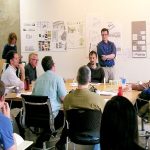Our goal when we started Binfire has always been to make the project management workflow easy to understand and use. We did plan to make our software the best solution for project planning, tracking, and organization.
To achieve our stated goal, we do strive to make our project management application simple to use. We believe a good application does not need user guides, a ton of documentation or instructional videos to guide the user how to use the application.
Are we there yet? Not quite yet, but we are getting closer.
In this article, I show the new Binfire’s workflow and how it could be used most effectively by our customers. We believe the way we have structured the application workflow is the most efficient way for getting things done.
The highest level we have in the application is the Workspace. Workspace is the container which holds all your projects, members, and information. A Workspace may have unlimited number projects and members.
The person opening an account in Binfire is the owner of the Workspace and manages everything in that space. The owner can delegate some or all responsibilities to people he or she assigns as admins.
The second level after the Workspace is the project.
A project has members, tasks, files, bugs, and communication and collaboration data in the form of messages, live chat and comments.
A drawing of Binfire’s project management application workflow is shown below:
1. Graphical View of Project Management Workflow
Project Management Workflow
Below I have explained each item used in the application to better understand the project management workflow we have implemented. This article is not meant to be an exhaustive tutorial on how to use Binfire (we hope our customers don’t need one), but give the new user a high-level view of how to proceed and use the application after opening a new account.
Workspace- Holds everything a user does or owns in the application. A Workspace has members, projects and data (conversations) associated with it. Members include the owner, admins, project members, clients etc.
Project- A project is a self-contained place for all actions and data needed in order to finish a product or service. A project holds members, tasks, bugs messages and documents used in the work needed to bring a product to the market.
Each project includes its own tools and services. Only the project’s members have access to these services. The features currently available in the application are the following:
- Project Dashboard- A simple Kanban board which shows all tasks or bugs in the projects and their status. At the bottom of this page, project statistics are shown.
- Task manager– The task manager provides everything you need for planning, tracking and completing tasks and milestones within the project. It supports subtasks and dependencies. Each task has a dashboard for adding details like task description, assigning a task to multiple people, commenting and much more.
- Interactive Gantt Chart– The interactive Gantt displays tasks in graphical format. This helps to show task duration, start date, due date and dependencies in a clearer way. You can edit tasks right in the Gantt chart and everybody in the project is updated in real-time.
- Document manager- The file manager keeps every version of each file you keep in the project. The user can access any version at any time. Project members can collaborate on PDF and image files using the Markup tool.
- Bug tracker- Each project in Binfire has its own easy to use bug tracking tool. This tool is very similar to Jira but it is tightly coupled with the project.
- Message board- For team communication, each project has its own message board. You can create multiple channels to cover as many topics you want to track in your project. The message board is similar to Slack with the advantage of each project having its own board and channels. The data is secured and only accessible to the project members.
- Interactive Whiteboard- For brainstorming with remote workers nothing works better than the real-time interactive whiteboard. You can create multiple boards for each project. You can write, draw and paste images on the board and everybody is updated in real time.
- Time tracking- In cases you need to track the time you and your team spend on tasks or fixing bugs in each project, the application provides one of easiest time tracking services available today.
In addition to the above Binfire includes a number of auxiliary tools for enhancing user’s experience and encouraging collaboration while working on projects. These tools include:
- Real-time chat- You and your team can communicate with one or more people in your Workspace from within the application.
- Time Sheet- A report at time spent by each member in the project on task or bug fixes.
- Project report- A PDF file which records the latest status of each project. A good document for taking to status meetings.
- Burn-down Chart- Another visual tool that shows how the project is processing.
Recommended Workflow
After you signup for an account in Binfire and confirm your email address, the application’s onboarding process lets you select a name for your Workspace and the first project. Use your company’s name for the Workspace name and proper name for the project name.
The onboarding also lets you add new members to your Workspace and project.
The first thing to do after you log in, is to create new projects if needed and add more members to your Workspace. Assign each member to as many projects as needed.
Each project has its own dashboard which displays tasks and bugs already entered in the project. This dashboard is based on Kanban board and you can use it to view the status of tasks. You can also move tasks using drag & drop from one stage in development to the next in the development process.
Now you and your team are ready to add tasks and documents to your projects. Each project has a unique folder for the project’s documents. This folder is visible to all project members unless you restrict access to it for some. The file manager keeps all version of a file.
In the task page, you can create tasks and assign them to people. Each task has its own dashboard which lets you and your team collaborate on tasks using commenting, tagging and file attachment.
An interactive Gantt chart accompanies the task manager. In the Gantt, all tasks in the project are shown graphically. The inter-dependencies between tasks is best viewed in a Gantt chart.
Use the message board for project-wide discussion. You can create a channel for each topic you would like to cove in the project. Add members to channels and if needed delete or archive channels which are not needed anymore.
Other tools like the interactive whiteboard, Bug tracking, and document markup could be used when they are needed in the project.
One last feature which I would like to cover in this article is the project member’s roles. In the project control panel, you can create new roles and assign permissions to those roles.
For example, you can exclude some roles from accessing the project files or task page etc. Each member of the project is assigned a role. This lets you set what permissions people in your project have.
Binfire supports all project management methodologies like Agile, Waterfall and Hybrid project management methods. The application is flexible and easy to use so anybody with no background in project management can use it.
Project management workflow, when implemented correctly, can go a long way helping you manage and track your projects seamlessly and collaboratively.




